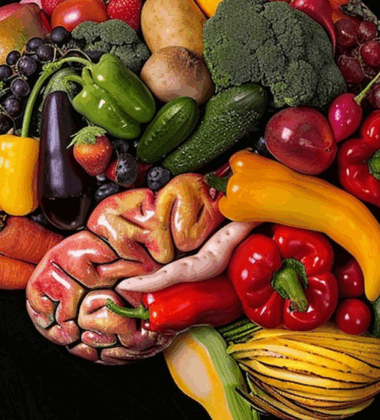At the upcoming Food and Beverage Expo USA, held June 26–28, 2025, at the New Jersey Expo Center, one of the most pressing topics for brands and consumers alike is truth in labeling and advertising. False advertising remains a significant challenge in the food industry, undermining consumer trust and inviting regulatory scrutiny. One of the most contentious claims is the use of the term “natural”—a label that is often vague, inconsistently defined, and at times misleading.
Understanding false advertising, particularly around claims like “natural,” is essential for brands aiming to succeed both domestically and internationally. This article dives into the complexities of false advertising in the food sector, explains how definitions vary across markets, and offers guidance on building transparent, compliant marketing strategies.
What Is False Advertising in the Food Industry?
False advertising refers to promotional statements or labels that mislead consumers about the nature, origin, ingredients, or health benefits of a food product. In practice, this might involve:
- Using terms like “natural,” “organic,” or “non-GMO” without meeting legal or industry standards.
- Making unsubstantiated health claims, such as “boosts immunity” or “cures diseases.”
- Omitting key information or using deceptive imagery.
- Misleading package sizes or ingredients lists.
False advertising is not only an ethical concern but also a legal one, exposing companies to lawsuits, fines, and brand damage.
Why “Natural” Is a Problematic Claim
Among misleading food claims, “natural” is perhaps the most widely abused and misunderstood. Unlike “organic” or “non-GMO,” which have clear certification processes, “natural” is loosely defined and regulated inconsistently worldwide:
- United States (FDA): The FDA has not issued a formal definition of “natural” for food products but generally interprets it to mean “nothing artificial or synthetic” has been added. However, this is not codified in law, creating gray areas.
- European Union: The term “natural” is regulated differently depending on product categories and is often restricted or requires clear substantiation.
- Canada: Health Canada defines “natural” as food free from added ingredients, but the definition is limited and doesn’t apply to all food types.
- Australia and New Zealand: Use strict standards and often require evidence that “natural” foods are minimally processed and free from artificial additives.
Because of these variations, a product labeled “natural” in one country may not meet the standards in another, complicating international marketing and export efforts for exhibitors at global events like the Food and Beverage Expo USA.
The Consequences of False Advertising
False advertising can lead to serious consequences for brands, including:
1. Legal Action and Fines
Regulatory bodies such as the Federal Trade Commission (FTC) in the U.S. and equivalent organizations worldwide have increased enforcement actions against misleading food claims. Penalties can include hefty fines, product recalls, and mandatory corrective advertising.
2. Consumer Distrust
In the era of social media and peer reviews, consumers quickly share negative experiences with misleading claims. Brands caught in false advertising scandals suffer lasting reputational damage, often losing market share and loyalty.
3. Retailer and Distributor Pushback
Large retailers and distributors are becoming more cautious about the claims brands make. False advertising may lead to delisting from shelves or exclusion from premium distribution channels.
4. Export Challenges
Inconsistent regulations around claims like “natural” can result in denied shipments, costly relabeling, and lost export opportunities. Exhibitors at international expos must be prepared to navigate these barriers.
How to Avoid False Advertising in Your Food Marketing
For companies preparing to exhibit at the Food and Beverage Expo USA and other global trade shows, here are key best practices to ensure transparency and compliance:
1. Understand Regulatory Definitions
Research and comply with the definitions and labeling laws for your target markets. Where “natural” is ambiguous, consider avoiding the claim or supporting it with clear, verifiable information.
2. Use Certifications When Possible
Certifications such as USDA Organic, Non-GMO Project Verified, or Gluten-Free provide consumer confidence and legal clarity. Use certified claims rather than ambiguous language.
3. Back Up Health and Nutritional Claims
If your product claims specific health benefits, ensure scientific evidence supports these statements. Keep documentation ready in case of regulatory review.
4. Audit Marketing Materials Regularly
Ensure packaging, websites, social media, and promotional materials consistently adhere to truthful messaging. Avoid exaggerated or unverified claims that can be interpreted as false advertising.
5. Educate Your Team
Marketing, legal, and product development teams must collaborate to review claims before launch. Training on current regulations and industry trends can prevent costly mistakes.
Transparency as a Brand Strategy
Today’s consumers are more educated and skeptical. They demand honesty and authenticity. Brands that embrace transparency can build trust and differentiate themselves at trade shows like the Food and Beverage Expo USA.
Examples of transparency-driven strategies include:
- Publishing ingredient sourcing and processing methods.
- Offering third-party test results or certifications.
- Providing clear, simple explanations of claims like “natural” or “clean label.”
- Engaging consumers through storytelling that highlights ethical practices.
Transparency not only reduces the risk of false advertising allegations but can create strong emotional connections with buyers and consumers.
Preparing for the Food and Beverage Expo USA: A Compliance Checklist
As you gear up for the Food and Beverage Expo USA, consider these steps to avoid false advertising pitfalls:
- Review all label claims against current FDA and international guidelines.
- Engage legal counsel to audit your marketing language and packaging.
- Train your booth staff to accurately communicate product attributes and certifications.
- Prepare documentation of certifications and scientific evidence to share with buyers and inspectors.
- Be ready to answer questions on ingredient sourcing, processing, and product testing.
By addressing false advertising proactively, your brand can leverage the expo to showcase authenticity and build lasting partnerships.
False advertising in the food industry is a critical issue that impacts brand reputation, legal compliance, and consumer trust. The ambiguous nature of terms like “natural” makes this challenge even more complex, especially when navigating multiple international markets.
At events like the Food and Beverage Expo USA, transparency and compliance are no longer optional but necessary for success. Brands that invest in truthful marketing and align their claims with regulatory standards position themselves as trustworthy leaders in a competitive global market.
As regulations continue to evolve and consumers demand greater honesty, embracing transparency and avoiding misleading claims will not only protect your brand—it will fuel growth and loyalty for years to come.





